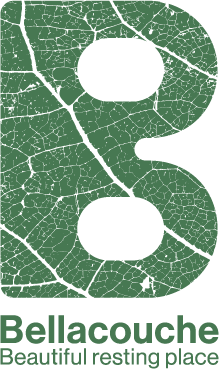
What is a Natural Burial?
Natural burial in its essence uses nature’s ability to turn every organism that has lived, back to humus that builds soil and in turn gives rise to more life. This is the Cycle of Life.
Natural burial sites seek to minimise the environmental impact of a funeral and provide valuable habitat for natural diversity. In a fast growing movement to reduce the environmental impact of everything we do in our lives, natural burial is the most time honoured and simplest solution.
Burial depths are shallower to encourage faster decomposition, and the shroud or coffin must be made entirely from natural and compostable materials (making wool burial very appropriate), and preferably sourced from the region. The management of the site itself will also vary according to its aims.
Natural burial sites have a very different look compared to conventional graveyards, although different sites will have different “styles”. Gone are the headstones and precision rows of graves. Some sites will allow small wooden plaques either on the plot, a tree or on a nearby ‘remembrance’ sculpture, wall or building. Synthetic materials of any description are not permitted as they will not biodegrade and can be harmful to the soil. Likewise, embalming or ‘hygiene treatment’ is banned.
It might be helpful to think when buying a ‘plot’ in a natural burial site, that you are engaging with the ‘place’ as a whole, not just the plot although these are, of course, mapped out. So rather than regularly placing flowers on a loved ones plot which might interfere with the management policy, you might choose to donate towards its management that will enhance the biodiversity of the site, such as nest boxes, pond creation, trees or wildflower seeds. Wildlife friendly natural burial sites help us humans to feel part of Nature, not apart from her.
The management of the site itself will also vary according to its aims. Funerals can go at their own pace, rather than the hurried slots in a crematorium.
All Bellacouche shrouds and soft eco coffin alternatives are made of natural materials which significantly reduces harmful emissions. And because wool is classed as non-flammable, there are no flame retardant chemicals within the fabric.
See our list of recommended UK Natural Burial Sites.
A natural burial site can be:
a woodland scheme either in existing woodland, or a place that will become woodland
a wildflower meadow, which might provide hay in the summer, and grazing in the winter.
regenerative pasture, sylvo pasture (a mixture of grazing for livestock and productive trees, such as apples, nuts etc, and part of farm diversification)
a conservation sight, such as Woodland Trust or Wildlife Trusts
an urban brownfield or parkland site for re-generation
or an existing but redundant burial site that is designated to become more wildlife friendly whilst providing plots for burial.
The History of Natural Burial
The concept of natural burial was devised by Ken West MBE and the first ‘natural burial’ site in Britain was opened in 1993 in Carlisle Cemetery.
Since that time, more than 350 natural burial sites have opened, although there may be more that are not part of a membership scheme, and indeed it is lawful to bury a loved one on your own land or garden, as long as it is at least 30 meters away from any watercourse, and it must be registered on the Deeds and Land Registry. As more and more councils declare a Climate and Ecological Emergency, one would assume that burial provision in this way should then be considered as part of the councils’ obligation to provide carbon zero solutions for burial, just as in the past each village, town or city provided burial sites in the form of cemeteries when cremation wasn’t an option. Note that there is a distinction between the ancient concept of burial (usually 6’ down) and natural burial (3’ is recommended). Historically, all burials would have used only natural materials, since synthetics weren’t available until the 20th century. So this new definition of ‘natural burial’ requires attention to the details of the environmental impact of a funeral.

